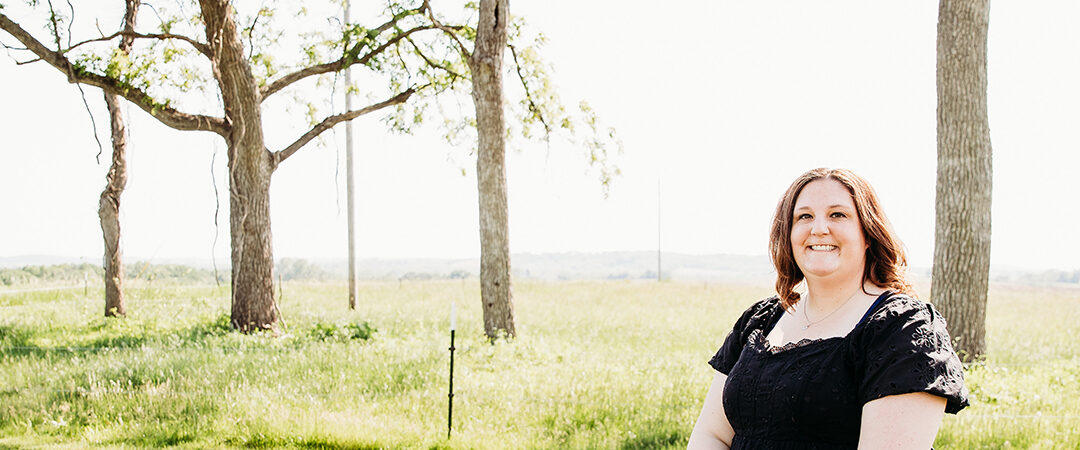April 9-11, 2013, marked the 6th Annual Symposium on Emerging Technologies hosted by the Sloan Consortium in Las Vegas, NV (http://sloanconsortium.org/conference/2013/et4online/welcome). Maryville University sent five representatives to the conference, varying in roles from faculty, to administration, to instructional design. The three-day conference was jam-packed full of sessions, workshops, vendors, and training sessions. I would like to use this opportunity to provide a brief summary of my experience at the Emerging Technologies Conference.
 |
| Faculty, administration, and designers representing Maryville University at the Sloan Consortium Emerging Technologies Conference in Las Vegas, NV. |
We arrived in Vegas on Monday evening, taking advantage of the free time to explore Old Vegas and various places on the Strip. Tuesday marked the kick-off of the conference, beginning with a series of interactive workshops. The first, titled “A Social Learning Ecosystem for Faculty Professional Development and Community Building,” was a session outlining an iinitiative called Faculty eCommons. Faculty eCommons (www.facultyecommons.org) is a resource designed by Academic Partnerships providing a venue for social collaboration and communication among online faculty. Faculty members are encouraged to submit articles outlining best practices they implement in their online pedagogy. During the session, the audience shared some of their best practices, including the use of a “Wisdom Wall” using Voicethread, an assignment in which students voice their thoughts on the course, their growth, and how to succeed in the course to inform the next generation of students. Another audience member explained that she asks faculty to develop 5-10 minute video introductions of them doing their favorite activity/passion, creating a unique and clever introduction. Yet another audience member described her institution’s initiative to build a faculty resource that addresses online pedagogy strategies using a wiki and WordPress site. Some examples of these resources include www.ocipresources.pbworks.com and www.elearnista.com. Finally, the session provided a tremendous resource: an interactive Content Blueprinting Tool that uses Adobe Reader. I’m waiting to receive the blueprinting tool via email and will share it once it arrives.
The second session was titled “Creating Customized Media Objects to Enhance Course Content.” Although the presentation experienced many technical difficulties, the message was clear – the presenters were providing best practices and examples of developing customized media objects. The session outlined the importance of scripting videos, discussing several apps used in this fashion; and emphasized the importance of chunking videos to be 2-4 minutes in length. The university presenting has an elaborate online learning center, with a specific sub-team comprising the “Quality Assurance Team” that checks and assures copyright. Finally, I learned of some media object concepts that I’m looking forward to taking advantage of in content development: an interactive timeline of content in a course (example: China chronology course broken down by weeks and is expandable to view in greater detail), and the use of infographics for content.
The next session I attended was titled “Increasing Student Learning Through Investment in Online Learning.” This session emphasized the importance of training instructors to realize that s/he is not only the instructor, but the students’ cheerleader/support system for that course. The presenters recommended that instructors establish rapport with students by calling them individually prior to the start of the course. The concept that resonated most with me was the presenters’ request to provide context to instructors/adjuncts teaching an online course. They recommended doing so by providing a roadmap of courses students have taken and courses they will take after, helping prepare them for future courses.
Next was a session titled “Making the Next Big Thing Happen When Nobody Believes You Can.” This was an excellent session that helped me grow as a professional team member. The speaker identified six leadership styles implemented in industry (adapted from Daniel Goleman), including the following:
- Pacesetting – “Do as I do, now!”
- Authoritative – “Come with me.”
- Affiliative – “People come first.”
- Coaching – “Try this.”
- Coercive – “Do what I tell you.”
- Democratic – “What do you think?”
While there are six distinct leadership styles, most often we see a mixture of the styles; a good leader takes advantage of multiple leadership styles and implements each whenever necessary. Next, the speaker identified five C.L.E.A.R. Principles of an effective leader. He claims that effective leaders:
- Communicate effectively
- Lead with excellence
- Adjust their attitude
- Respect givers
- Risk takers
He then provided examples of how we might implement these C.L.E.A.R. principles in our own leadership experience.
Finally, we attended the keynote address, titled “What’s That Coming Over the Hill? Digital Futures, Emerging Cultures, New Learning” by Steve Wheeler of Plymouth University (www.steve-wheeler.net). Wheeler outlined the evolution of the Web, breaking down the progression into Web 1.0, 2.0, 3.0, and X.0:
- Web 1.0 – the Web, anything can link to anything, hyperlinking
- Web 2.0 – the social Web, user participation
- Web 3.0 – the semantic Web, existing data, connects knowledge
- Web X.0 – the meta Web, connects intelligences
He stated that we are currently in Learning 3.0, marked by such phenomena as distributed cloud computing, extended smart mobile technology, collaborative intelligent filtering, and 3D interaction and visualization. He emphasized the personal learning network as a new way of learning, and the importance of establishing connections to find knowledge when needed (distributed learning). With this evolution in learning, as educators, we need to cater to this new need for digital wisdom and literacies; instead of teaching students facts and concepts, we should be teaching them how to find and filter through this existing knowledge.
And so concludes the first day of the conference. Part 2 of my experiences will be soon to follow.
